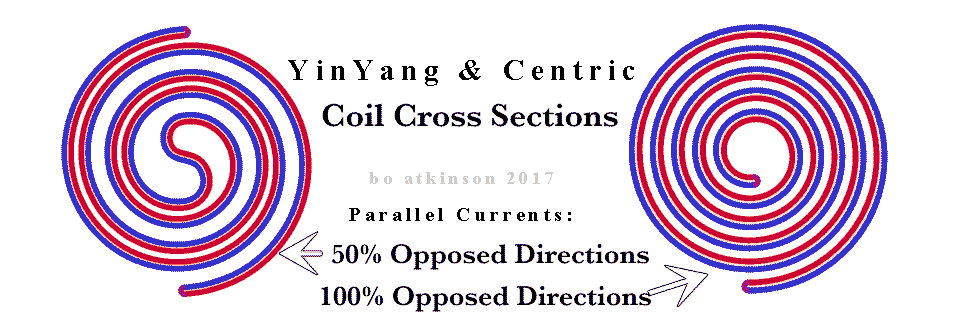
My enthusiasm was sparked by the original radiicoil, which surprisingly, always generates the radial magnetic pole. I wanted to explore just how parallel currents could possibly generate a radial magnetic pole. Therefore various types of coils were tested, in order to explore radial magnetic forces. Gradually, it was found that the radial magnetic effect was due other specific causes, other than first expected. Here are the surprising 2017 findings, beginning with my fascination with snail like, helical forms of parallel windings.
Parallel wires, drawn as red and blue spirals below, apparently could be wound for optionally opposed current directions. The "yin yang coil pattern" appears to equally divide matching (or same direction) currents with opposing (direction) currents. While the "centric coil pattern" provided fully opposed current directions, (in the coil wires).

I improved my winding tools and wound a number coils to test this curiosity. Differentiation of type, is visible in the coil ends,(photos below). I labelled each coil with electrical values of henries and ohms. Initially this gave me something to compare these with ordinary coils using comparable lengths of wire. (I am not trying to derive precise formulaic values here).
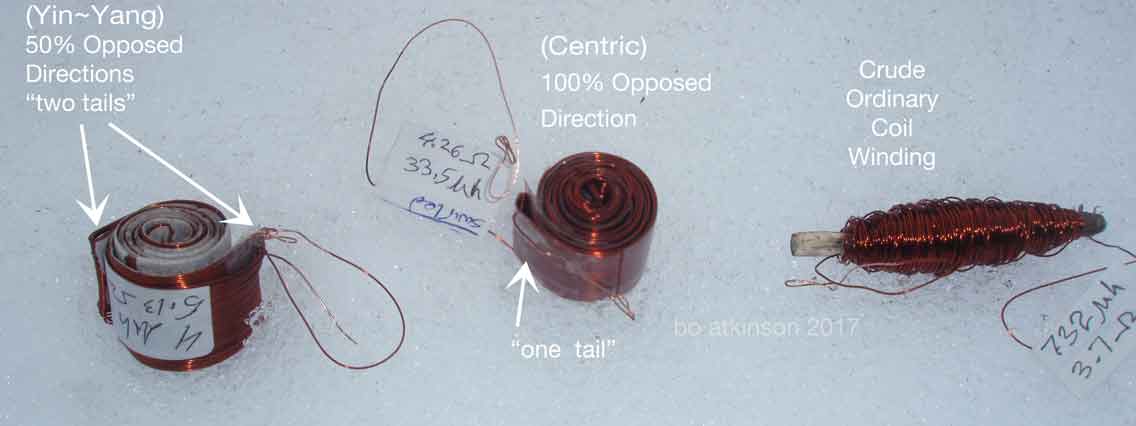
A considerably higher inductance was measured in the "centric coil, (with it's 100% opposed current, as seen in cross section). The Yin Yang coil version measured lower in micro henries. This deserves more study, (of the coil shapes and the value of inductance, usually noted as micro henries). I am also trying out further swirling composite coils, as 4 initial coils were swirled in photo below.
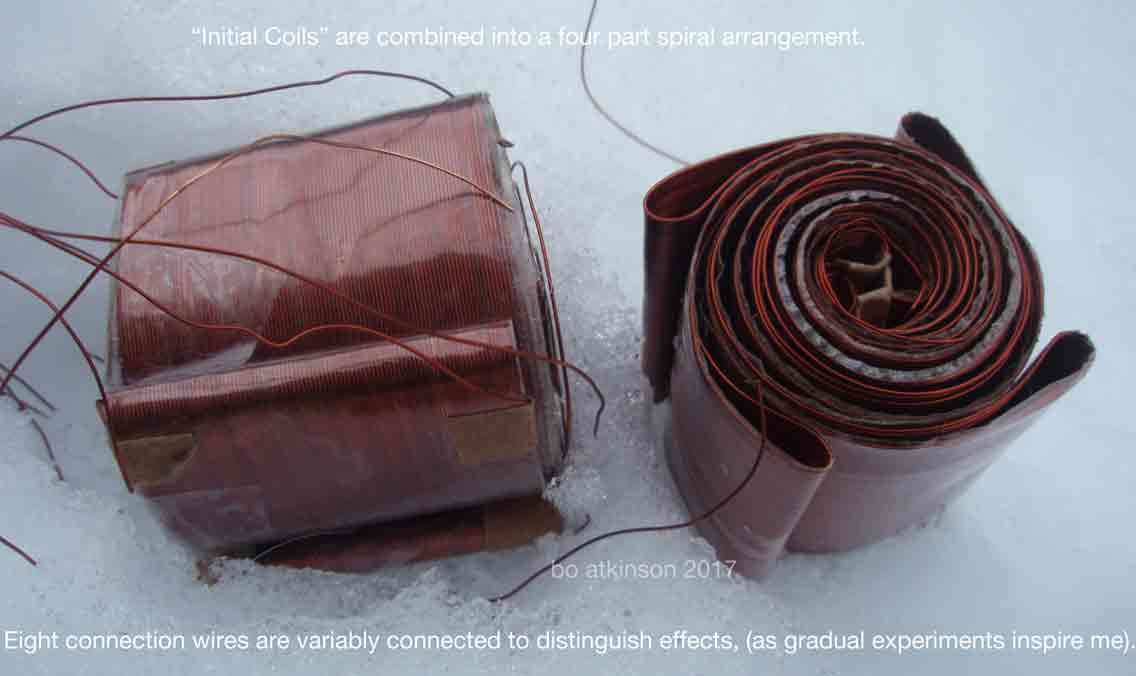
I had also wound more of the original radiicoil type. After exploring several "snail like coil varieties", copies of the original-radiicoil were made, (as in photo below). I began to notice that the radial pole was not generating, in the new "copies"! How could this be? Gradually, a realization that something differed, as compared with the original coil. I had tried longer wired and shorter wired versions, wondering if diameter-to-length ratios caused the radial pole. Finally it dawned on me that it must be misalignment of the paralleled wires, which caused the radial pole! My original radiicoil was formed with slightly protruding ends- This added a feature. Photo Below: Attempted Radiicoil Copies (Without Radial Magnetic Poles).
Of more interest to me, was to map the magnetic fields, (which provided only crude mapping with my crude devices). I searched for indicators of radial magnetic poles. The compass readings simply indicate magnetic directions, in the vicinity of coils. I bought some cheap floating ball compasses, which might provide better sensitivity for 3D mapping, of 3D objects, of the physical world. (See my earlier magnetic results here. (A Youtube might eventually be posted here, if my interest continues).
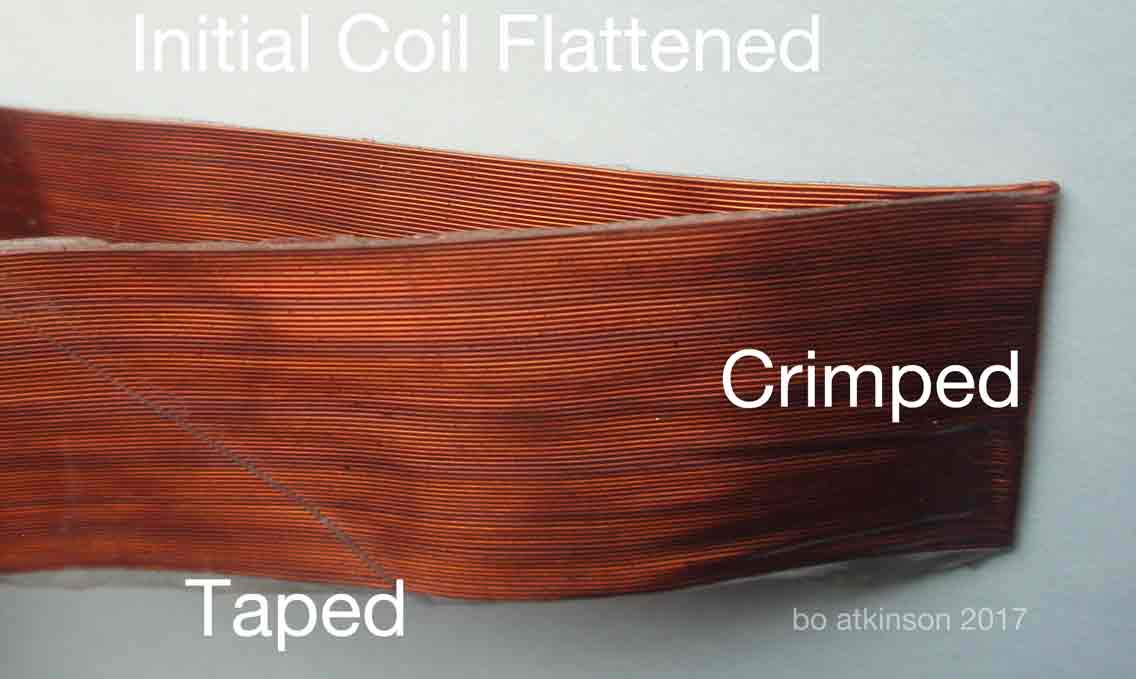
The original radiicoil, due to my earlier winding tools, had poorly aligned windings. This happened after winding the initial coil. It happened while folding the initial coil into a "C shaped, open ring". This misalignment was not intended and was overlooked, due to the surprising radial pole finding. My newer copies were more carefully folded while paralleling inner and outer coil parts. This cancelled the radial pole effect! This realization was disappointing, at first. As the explorer loves discovering newly functional forms. In this case, the newly discovered quality of form, appears to be a very specific disarray. What is it about this very specific disarray? My expectation was that minor overlapping, at the ends, (during the first radiicoil folding), will manifest and verify, the radial pole effect. The artgineer can next explore preferable methods to specially overlap, at the radiicoil ends.
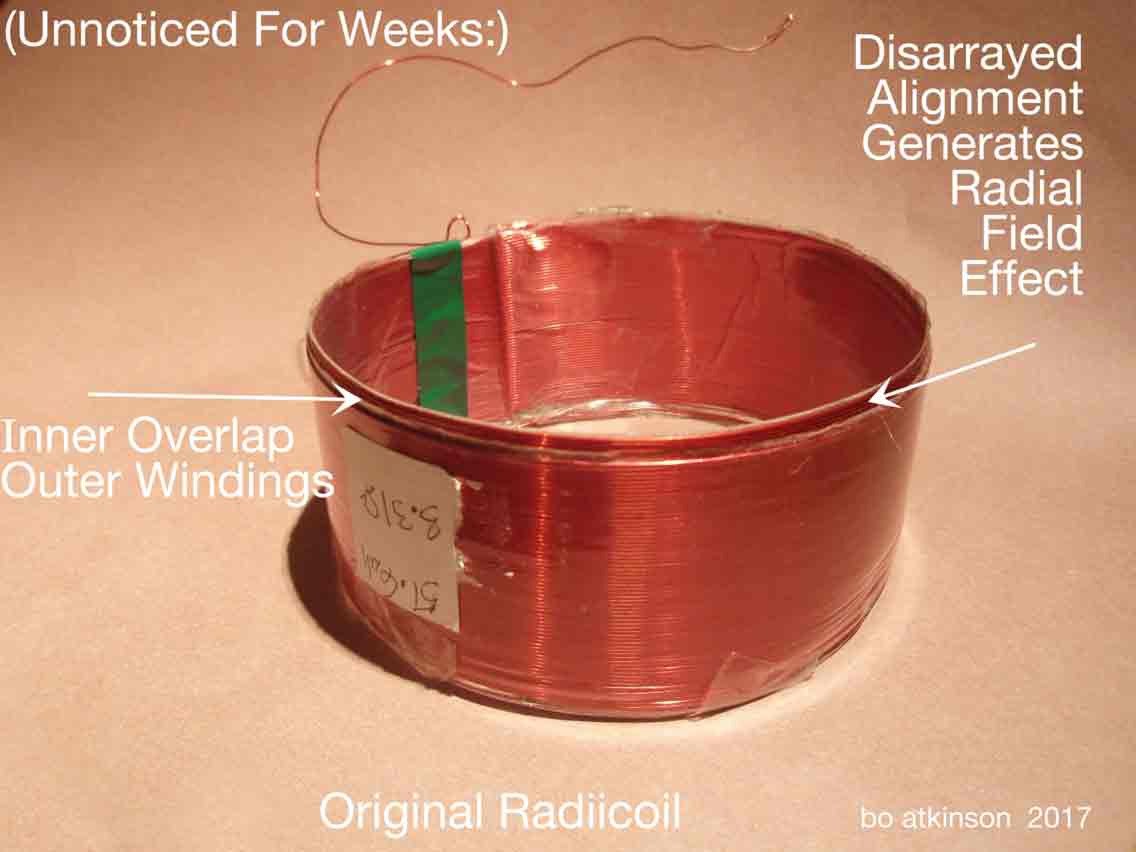
The specific cause of my radiicoil, "radial pole", was expected to involve the parallel, opposed current flows, but this was not found in successive copy attempts which had much better symmetry, (seen in this picture of two trials) . It appears that just a small amount of disarray, visible in the photo above, forces the parallel windings into the radial-magnetic pole generation. (As the radial pole does appear, when electrical current is applied).
I decided to test some conventionally wound coils, at this writing in February 2017. Opposing coils have been used inside "reactance resistors", but this is a vague area of electronics technology, which is mot my focus. I'm focused on generation of specific, radial-magnetic fields. My coil below apparently produces the strongest radial field so far. I considering various ways of connecting opposing coils to enhance the magnetic effects. More of these experiments might be added, if inspirations permits.
